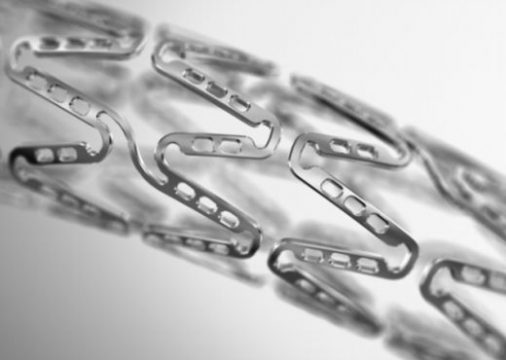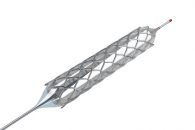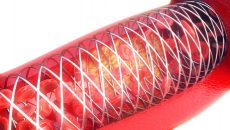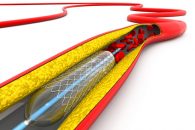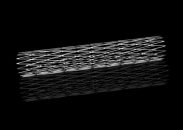Original Title: Tissue Protrusion after Stent Implantation. An ADAPT-DES Intravascular Ultrasound Substudy. Reference: Fuyu Qiu et al. J Am Coll Cardiol Intv. 2016;9(14):1499-1507. After DES implantation we may observe tissue protrusion (plaque or thrombus) relatively often, especially in unstable lesions; however, its clinical impact has not been studied. The aim of this study was…
Stent Fracture: More Frequent than Expected
Original Title: Incidence and Clinical Outcome of Stent Fractures on the Basis of 6555 Patients and 16482 Drug Eluting Stents From 4 Centers. Reference: Kan J et al. JACC Cardiovasc Interv. 2016 Jun 13;9(11):1115-23. Courtesy of Dr. Guillermo Migliaro. Stent fracture (SF) has been associated with instent restenosis (ISR), stent thrombosis (ST) and repeat revascularization…
Instent restenosis: Drug eluting balloons or drug eluting stents?
Original Title: Long-Term Results of Everolimus-Eluting Stents versus Drug-Eluting Balloons in Patients with Bare-Metal In-Stent Restenosis 3-Year Follow-Up of the RIBS V Clinical Trial. Reference: Alfonso F. et al. JACC Cardiovasc Interv. 2016 Jun 27;9(12):1246-55. Courtesy of Dr. Agustín Vecchia. RIBS V 3 year follow up Stents have become the gold standard for…
Stent thrombosis: Comparative analysis between BMS, DES and BRS
Original Title: Stent Thrombosis with Drug Eluting Stents and Bioresorbable Scaffolds. Evidence from a Network Meta-Analysis of 147 trials. Reference: Kang S et al. J Am Coll Cardiol Intv 2016 doi 10.1016. Courtesy of Dr. Guillermo Migliaro. When treating heart disease, drug eluting stents (DES) have become essential for PCI. Its main advantage lies on…
Bioresorbable Scaffold Thrombosis: incidence, risk factors and possible mechanism
Original Title: Bioresorbable Vascular Scaffold Thrombosis. Multicenter Comprehensive Analysis of Clinical Presentation, Mechanisms, and Predictors. Reference: Puricel S et al. J Am Coll Cardiol 2016;67:921-31. Courtesy of Dr. Guillermo Migliaro. Bioresorbable scaffolds (BVS) were introduced in interventional cardiology to avoid late DES complications. However, recent reports suggest an elevated incidence of thrombosis with these new devices.…
Mechanisms of Very Late DES Thrombosis by OCT
Original Title: Mechanisms of Very Late Drug-Eluting Stent Thrombosis Assessed by Optical Coherence Tomography. Reference: Masanori Taniwaki et al. Circulation. 2016 Feb 16;133(7):650-60. The physiopathological mechanisms behind DES thrombosis have not been fully described yet. The potential causes behind this adverse event were assessed using optical computed tomography (OCT). Between August 2010 and December 2014,…
High bleeding risk: is BMS still justifiable?
Original Title: Is Bare-Metal Stent Implantation Still Justifiable in High Bleeding Risk Patients Undergoing Percutaneous Coronary Intervention? A Pre-Specified Analysis From the ZEUS Trial. Reference: Sara Ariotti et al. J Am Coll Cardiol Intv. 2016;9(5):426-436. This work studied ischemic and bleeding events in high bleeding risk patients randomized to the zotarolimus eluting stent (ZEZ) Endeavor…
Diabetes has higher impact on DES outcomes than disease complexity
Original Title: Impact of diabetic status on outcomes after revascularization with drug-eluting stents in relation to coronary artery disease complexity. Reference: Koskinas KC et al. Circ Cardiovasc Intv. 2016; Epub ahead of print Diabetic patients ongoing PCI with drug eluting stents (DES) are at higher risk of repeat revascularization than non-diabetic patients. According to this…
SORT OUT IV at 5 years: second generation DES efficacy confirmed
Original Title: Safety and efficacy of everolimus-versus sirolimus-eluting stents: 5-Year results from SORT OUT IV. Reference: Jensen LO et al. J Am Coll Cardiol. 2016;67:751-762. Reassuring long term outcomes from SORT OUT IV confirm the safety and efficacy of second generation everolimus eluting stents (EES) over first generation DES. The difference at 5-year follow up…
In saphenous vein graft lesions, 1st and 2nd generation DES have similar outcomes
Long-Term Outcomes with First vs. Second-Generation Drug-Eluting Stents in Saphenous Vein Graft Lesions. Nagendra R. Pokala. Catheterization and cardiovascular Intervention 2016;87:34-40 Courtesy of del Dr. Carlos Fava. Second generation DES have been proved superior to first generation DES in native arteries, but there is limited information on DES in saphenous vein grafts (SVG), from a…
Definite/Probable Thrombosis with Bioresorbable Scaffolds
Original Title: Scaffold Thrombosis After Percutaneous Coronary Intervention With ABSORB Bioresorbable Vascular Scaffold. A Systematic Review and Meta-Analysis. Reference: Michael J. Lipinski et al. J Am Coll Cardiol Intv. 2016;9(1):12-24. The authors of this study carried out a systematic review and a meta-analysis to determine the thrombosis risk of the bioresorbable everolimus eluting scaffold ABSORB (Abbott…
